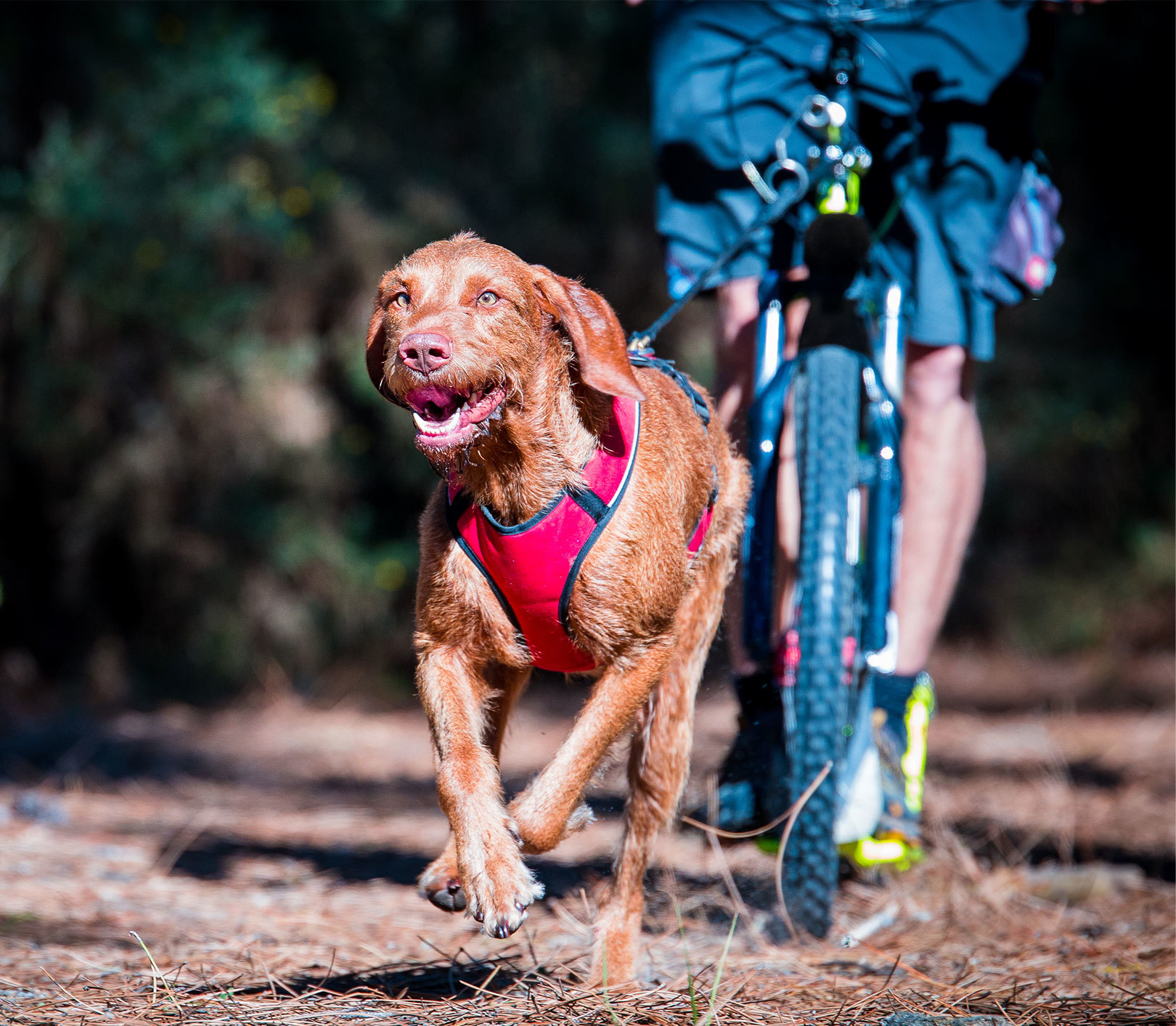Learn Dogscooting
Your pet stands calmly in front of you, his eyes are alert and his body shows a certain basic tension. Then you give the long-awaited command: "Go!" You feel the enormous physical strength that your furry friend seems to have no problem exerting. Together you race through the beautiful terrain in the middle of nature!
Would you like to experience an adventure together with your bundle of energy? Then find out here why dogscooting is the ideal balance to everyday life and how you can form an unbeatable dog-human team with dogscooting!
How does dogscooting work?
In addition to canicross and bikejöring, dogscootering has become a popular trend in the dog sports scene in recent years and is spreading more and more quickly in Germany. In this pulling dog sport, you are pulled on a dogscooter (similar to a pedal scooter) by your furry nose. This sport is not only an excellent
- strength and endurance training for your dog,
- Dogscooting also strengthens your bond.
Since you are in motion at the same time, proper communication is essential: your furry friend must stop as soon as you give the command. It is also your task to steer your four-legged athlete or to support him on a mountainous terrain uphill with a lot of impetus. In order for you to be able to communicate flawlessly with each other, these commands should sit well:
- “Right”
- “Left”
- “Stop”
- “Go” oder “Come on”
- “Slow”
- “Pull”
Marie from the We love HUNTER team:
"Dogscooting is great! While my Sam can work off his energy, I can enjoy nature on the scooter. I really notice how good the work is for Sam and how he blossoms. For a long time I had the feeling that I wasn't really doing him justice in my daily routine. Fortunately, that has changed with Dogscooting. I found the pulling dog school particularly helpful. Here I learned how often I'm allowed to train, which temperatures are suitable and which routes are optimal at the beginning."
Dogscooting: Which dogs are suitable?
Ever since dogs have lived together with humans, they have served as draft dogs, e.g. to transport heavy loads as sled dogs. Even though dogscooting is somewhat reminiscent of this, the work benefit is not at all in the foreground - it is the fun that motivates the many dogscooters
However, this dog sport is only fun if the safety of your pelt-nose is guaranteed - because not every breed and every dog is suitable for this sport. Therefore, only dogs that
- eager to run,
- healthy,
- are at least 12 month old and
- weigh at least 20 kg.
Attention: Make sure that the weight ratio between you and your dogis correct. Dogs can pull about four times their own body weight. If your dog weighs e.g. 20 kg, you should not exceed 80 kg together with the dogscooter.
Dogscooting: The right equipment is important
If your furry friend meets all the criteria, you need the right equipment! Because you can only be safe with the right accessories. This includes:
- Dogscooter: Dog scooters are available in different sizes and models to suit the four-legged friends and owners. In addition, the scooters are equipped with practical functions such as a height-adjustable suspension fork and highly effective disc brakes. Conventional pedal scooters and kickbikes are usually not suitable because they often have a too small footboard and do not meet other important requirements. It is best to go to a special shop for dog scooters for advice.
- Pulling harness: It is best to try on the harness together with your trainer or in the shop. The advice of an expert is needed here! The harness must fit like a glove so that it does not cut in and cause pain.
- Jerk damper leash: When your athlete pulls in, it is important that her back is protected by the jerk damper on the pull line. A so-called joring leash has a built-in jerk damper and prevents your furry friend from getting a sudden jolt from the pulling harness.
- Moveable antenna: You should attach a bike antenna to the steering wheel. The metal antenna guides the line through an eyelet over the front wheel and ensures that the pull line does not get caught in the spokes when riding.
- Bicycle helmet: Your safety is also important! Therefore, we recommend a bicycle helmet.
Learning Dogscooting: 6 Tips for Beginners
The right preparation is important! An experienced dog trainer or a dog school is the right decision so that you can learn how to use the dog scooter properly and your furry friend can get used to this pulling dog sport step by step.
However, we have a few tips for you first:
- Take part in a taster course or borrow the equipment at the beginning.
- Familiarise yourself with the dogscooter and learn to drive it without a dog.
- Make sure your furry friend knows the necessary commands.
- Build up your dog's fitness slowly without overtaxing him.
- Follow all safety instructions and always use the equipment intended.
- Find a suitable terrain, e.g. a forest path that is easy to drive on.
Conclusion: Dogscooting is the perfect activity for dogs who like to run! Special dogscooting courses help you with the practical instruction - so you can make sure that you practice this dog sport correctly. If you don't do it right, your dog could suffer health problems. It would also be a shame to spend money on the equipment only to find out that your four-legged friend is not interested in this trendy sport.
Are you up for an adventure with your four-legged friend? Then find out - there's sure to be a taster course near you. Write us about your experiences in the comments column below!
